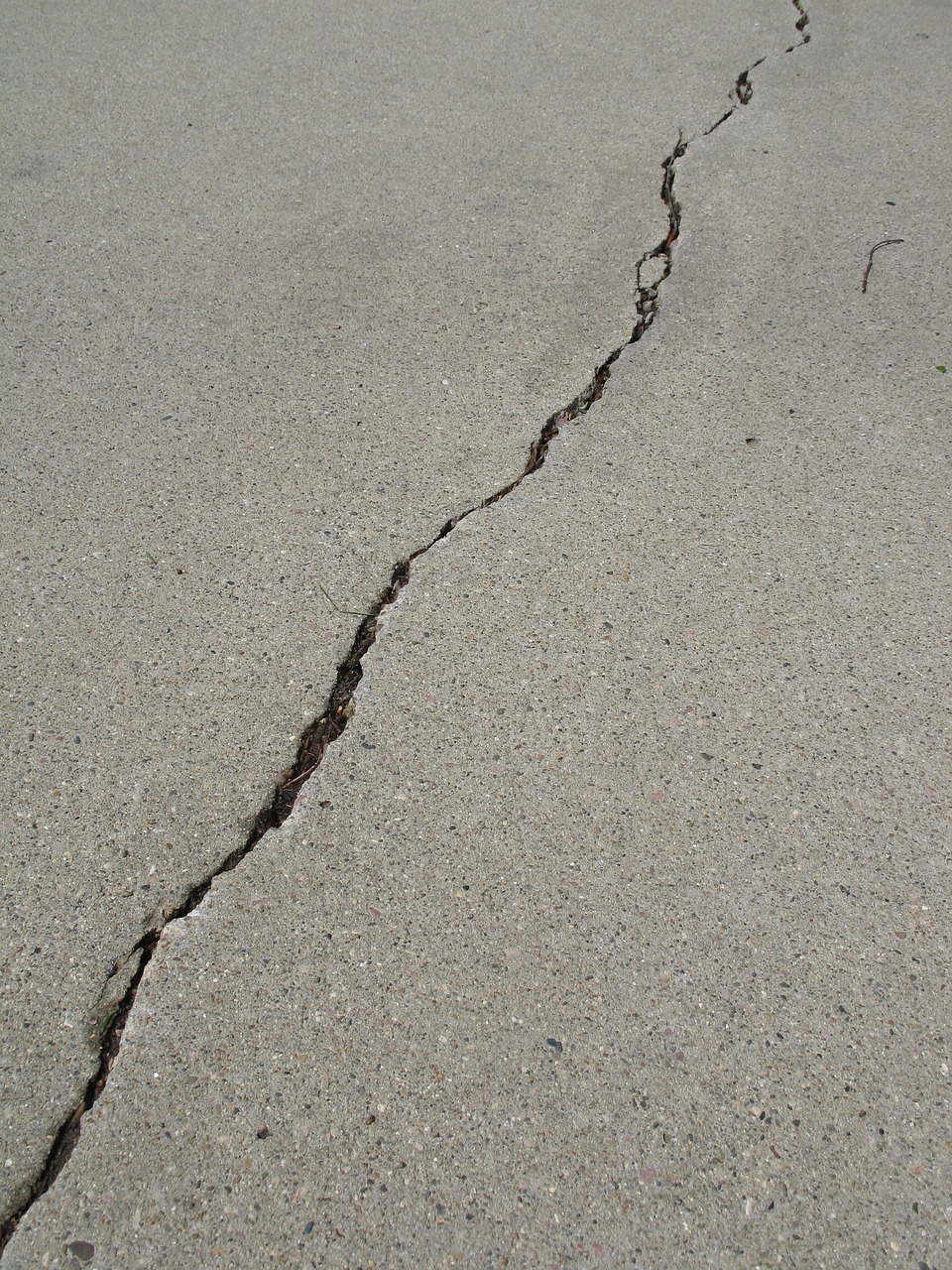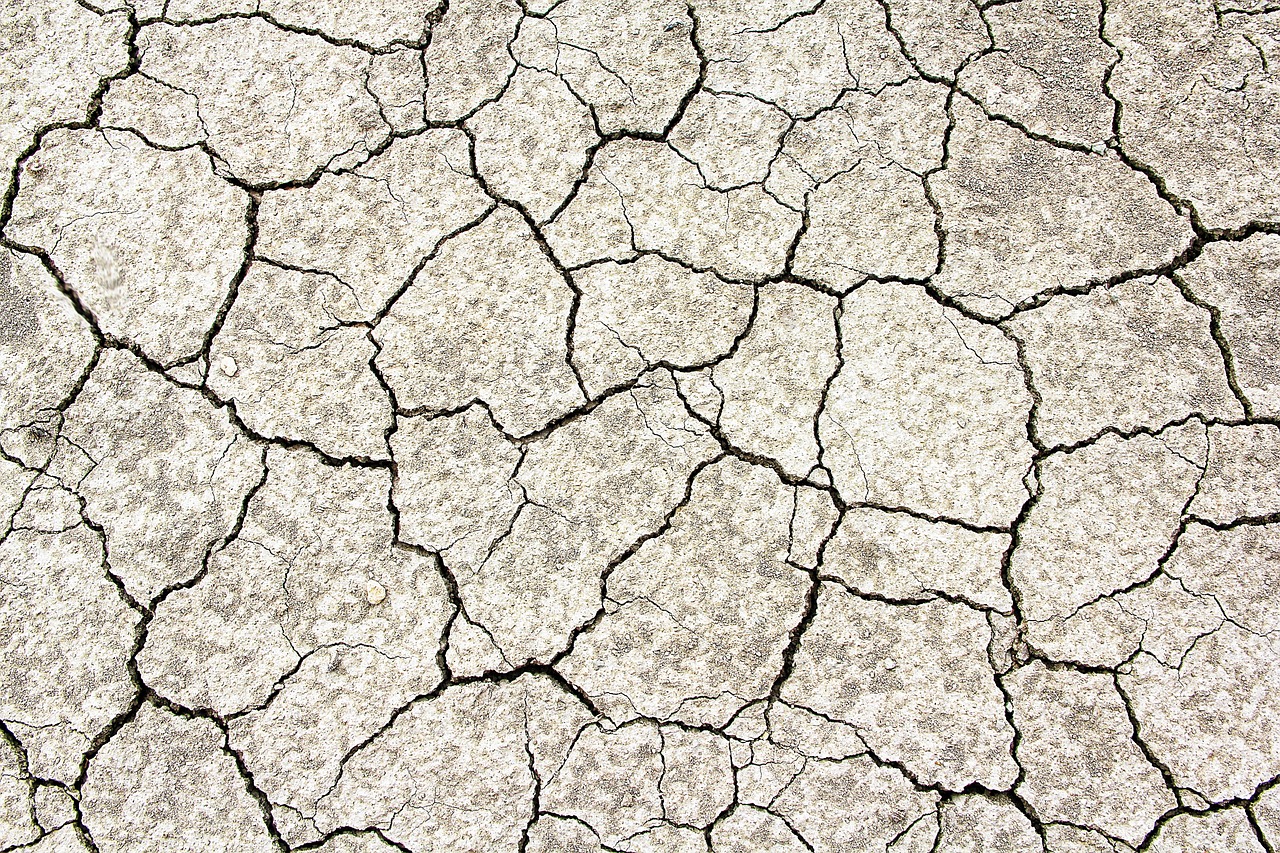Cracks in your floors can be an eyesore and a potential hazard if left unaddressed. Whether you need to repair floor cracks in hardwood or concrete, understanding the process can save you time and money. In this comprehensive guide, we’ll walk you through every step, from assessing the severity of the crack to choosing the right floor crack repair services. Learn how to efficiently fix concrete floor cracks and repair hardwood floor cracks using simple methods that even beginners can master. With a few essential tools, some preparation, and the right techniques, you can restore your floors to their original beauty and functionality. Ready to get started? Let’s dive into the details and make your floor look as good as new!
Understanding Different Types of Floor Cracks
Before embarking on any floor crack repair services, it’s crucial to understand the different types of floor cracks you might encounter. Identifying these types correctly can help you choose the appropriate fix for your flooring.
Below is a quick guide to differentiate between common floor cracks:
Types of Floor Cracks
| Type of Crack | Characteristics | Common Causes |
|---|---|---|
| Hairline Cracks | Very thin, spider-web-like | Concrete Floors: Settling or drying out, Hardwood Floors: Slight wood movement |
| Surface Cracks | Narrow but extends over a larger area | Wear and tear, poor initial installation |
| Deep Cracks | Penetrates through the entire thickness | Severe settling, heavy impacts |
| Joint Cracks | Located where two sections meet | Thermal expansion, structural issues |
Why It Matters
By understanding these types, you can tailor your approach to ensure effective repairs:
- Hairline Cracks: Typically found in both concrete and hardwood floors, these are minor but need attention to avoid worsening.
- Surface Cracks: More common in aged or heavily trafficked areas, these cracks require surface-level solutions.
- Deep Cracks: These are structural concerns, demanding more comprehensive methods to stabilize the area.
- Joint Cracks: Often need special attention due to the nature of joint expansion and contraction.
Key Points
Identifying the exact nature of the crack helps in determining:
- Appropriate Tools and Materials: Some cracks need simple fillers, while others might require specialized products or techniques.
- Repair Strategy: Different cracks necessitate various methods, whether it’s using caulk for hardwood floors or epoxy for concrete floors.
- Professional Intervention: In cases of deep or joint cracks, considering floor crack repair services might be the safest and most effective option.
By thoroughly understanding and categorizing the crack types, you can more effectively proceed with repairs or decide if professional services are needed. Remember, addressing floor cracks promptly can prevent further damage and prolong the life of your flooring.

Image by mherfurt from Pixabay
Assessing the Severity of a Floor Crack
Before diving into floor crack repair services, it’s crucial to understand the severity of the cracks you’re dealing with. Accurately assessing the condition of your floor will guide you toward the most appropriate repair methods.
Key Factors to Assess Severity
There are several key factors to consider when evaluating the severity of a floor crack. Here’s a brief guide on what to look for:
-
Crack Width
- Hairline Cracks: Less than 1/16 inch wide.
- Moderate Cracks: Between 1/16 inch and 1/4 inch wide.
- Large Cracks: Wider than 1/4 inch.
-
Crack Depth
- Surface Cracks: Limited to the top layer.
- Deep Cracks: Extend through multiple layers or the entire depth of the floor.
-
Crack Length
- Short Cracks: Less than 12 inches.
- Long Cracks: More than 12 inches.
Step-by-Step Guide to Assessing Floor Cracks
To determine the severity of the cracks, follow these steps:
-
Visual Inspection
- Conduct a thorough visual check of the floor surface to identify any visible cracks.
- Use a flashlight if needed to spot less obvious cracks.
-
Measure the Crack
- Use measuring tools like a ruler or digital caliper to measure the width and length of the crack.
- Note the depth by inserting a thin object like a nail or toothpick.
-
Document Findings
- Write down all measurements and take photos for future reference.
- Draw a simple sketch of the floor plan marking each crack.
Table of Crack Severity Indicators
| Severity Level | Crack Width | Crack Depth | Crack Length |
|---|---|---|---|
| Hairline | < 1/16 inch | Surface | < 12 inches |
| Moderate | 1/16 – 1/4 inch | Up to 1/2 inch | 12 – 24 inches |
| Large | > 1/4 inch | Deeper Layers | > 24 inches |
Tips for Accurate Assessment
- Use a flashlight: Helps in identifying subtle surface cracks.
- Note environmental conditions: Temperature and humidity levels can affect the width and spread of cracks.
- Compare previous photos: If available, compare the current condition with older images to track changes over time.
Assessing the severity of floor cracks precisely ensures that you can choose the right methods to fix concrete floor cracks or repair hardwood floor cracks, saving both time and effort.
Gathering Essential Repair Tools and Materials
Before embarking on your journey to fix concrete floor cracks or repair hardwood floor cracks, it is crucial to gather all necessary tools and materials. Equipping yourself with the right items can streamline the process, ensuring a smooth and successful repair. Here’s a comprehensive list of what you will need:
Basic Tools
- Protective Gear: Safety goggles, gloves, and a dust mask to protect yourself from debris and dust.
- Utility Knife: For cutting and cleaning out cracks.
- Wire Brush: Helps in cleaning and preparing the crack area.
- Putty Knife: Essential for applying filler materials smoothly.
Materials for Concrete Floor Cracks
- Concrete Patch: Choose either a premixed or a mix-with-water type, depending on your preference.
- Epoxy: A strong adhesive used in more significant or structural repairs.
- Foam Backer Rod: Fills larger gaps before applying caulk.
- Caulk: Polyurethane or latex caulk can effectively seal minor cracks.
| Material | Small Cracks | Large Cracks | Structural Importance |
|---|---|---|---|
| Concrete Patch | Yes | No | Moderate |
| Epoxy | No | Yes | High |
| Foam Backer Rod | No | Yes | Low |
| Caulk | Yes | No | Low |
Materials for Hardwood Floor Cracks
- Wood Putty: Ideal for filling small gaps in hardwood.
- Wood Filler: Works well for both minor and significant cracks; sandable and stainable.
- Epoxy Wood Filler: Suitable for repairing larger cracks.
- Sandpaper: Assists in smoothing the dried repair area.
| Material | Small Cracks | Large Cracks | Sandable | Stainable |
|---|---|---|---|---|
| Wood Putty | Yes | No | Yes | Yes |
| Wood Filler | Yes | Yes | Yes | Yes |
| Epoxy Wood Filler | No | Yes | Yes | No |
Additional Supplies
- Vacuum: To clean up dust and debris after sanding.
- Painter’s Tape: Shields edges around cracks during repair.
- Bucket and Sponge: For cleanup and, if necessary, moistening the cracks before repair.
Summary
By gathering these tools and materials beforehand, you’re well-prepared to tackle any issues. Proper preparation is a key step, whether you aim to repair hardwood floor cracks or employ effective methods to fix concrete floor cracks. Each material serves a unique function, ensuring your floor repair process is as effective and efficient as possible.
Preparing the Floor for Repair
Before you embark on any floor crack repair services, it’s crucial to ensure your working area is well-prepped. Proper preparation not only makes the repair process smoother but also enhances the final result, whether you’re dealing with hardwood or concrete floors. Here’s a step-by-step guide to help you prepare effectively:
1. Clear the Area
- Remove any furniture, rugs, and decorations from the room.
- Sweep or vacuum the floor to eliminate dirt and debris.
- Ensure there’s ample space around the crack for easy access.
2. Clean the Crack
- Utilize a stiff brush to scrub the crack and remove loose particles.
- For a more thorough clean, consider using a vacuum cleaner with a hose attachment.
- Wipe the area with a damp cloth to remove any remaining dust or grime.
3. Inspect the Crack
- Utilize a flashlight and magnifying glass to closely examine the crack.
- Identify whether it’s a hairline crack or something more significant, as this will dictate your next steps.
4. Gather Essential Repair Tools and Materials
Having the right tools and materials on hand will save you time and ensure a seamless repair process. Here’s a basic checklist:
| Material / Tool | Purpose |
|---|---|
| Epoxy Filler | To fill large or deep cracks |
| Wood Putty | Ideal for filling hairline cracks in wood |
| Putty Knife | For applying fillers or epoxy |
| Sandpaper | Smoothing the repaired area |
| Vacuum & Brush | Cleaning the crack and surrounding area |
| Damp Cloth | Removing finer debris |
5. Protect the Surrounding Area
- Tape off the surrounding areas with painter’s tape to avoid any unwanted spills or excess material.
- If working with epoxy or other strong chemicals, ensure good ventilation in the room by opening windows or using fans.
6. Let the Floor Dry
- Allow the floor to dry completely before moving on to repair steps. Moisture can interfere with the adhesion of fillers and may compromise your entire repair project.
By following these steps, you’ll be well-prepared to tackle your floor crack repair confidently. Remember, a well-prepared floor sets the foundation for a successful fix, whether you’re aiming to fix concrete floor cracks or repair hardwood floor cracks.

Repairing Hairline Cracks in Hardwood Floors
Hairline cracks in hardwood floors are common and can occur due to various reasons like humidity changes, natural aging, or heavy foot traffic. Fortunately, dealing with these minor flaws is relatively straightforward and does not require professional intervention. Here’s a step-by-step guide to help you repair hardwood floor cracks effectively:
Tools and Materials Needed
Before you begin, gather the following tools and materials:
- Wood filler or putty
- Putty knife or scraper
- Sandpaper (fine grit)
- Wood stain (to match the floor color)
- Clean cloth
- Vacuum cleaner
Steps to Repair Hairline Cracks
- Clean the Area: Start by thoroughly cleaning the floor area around the crack. Use a vacuum cleaner to remove any dust and debris, ensuring that the crack is free from loose particles.
- Apply Wood Filler: Generously apply the wood filler into the crack using a putty knife. Make sure to press down firmly so that the filler penetrates deep into the crack.
- Smooth the Surface: Once the filler is in place, smooth the surface using the putty knife, removing any excess material. Allow it to dry according to the manufacturer’s instructions.
- Sand the Area: After the filler has fully dried, gently sand the repaired area with fine-grit sandpaper to blend it seamlessly with the rest of the floor.
- Stain the Repair: To ensure a uniform appearance, apply wood stain that matches the color of your hardwood floor. Use a clean cloth to apply the stain evenly.
- Final Touches: After staining, let the area dry completely before walking on it. Consider applying a finish to give it a high gloss, if desired.
Quick Tips
- Matching Stains: Make sure to test the stain on a scrap piece of wood or an inconspicuous area to ensure a perfect match.
- Regular Maintenance: Keep an eye out for new cracks and address them promptly to maintain your floor’s beauty.
| Key Points | Techniques |
|---|---|
| Cleaning | Vacuum and clear debris perfectly |
| Filling Cracks | Use wood filler and press firmly |
| Sanding | Blend repair with fine-grit sandpaper |
| Staining | Match and apply wood stain evenly |
By following these steps, you can efficiently repair hardwood floor cracks and restore your floor to its original beauty. For extensive damage, however, hiring professional floor crack repair services might be the best course of action.
Fixing Larger Cracks in Hardwood Floors
When it comes to fixing larger cracks in hardwood floors, the process demands a bit more care and specific tools to ensure a lasting and seamless repair. To achieve professional-looking results, follow these simple yet effective methods:
Identifying Larger Cracks
Before you begin, make sure to properly identify the extent of the cracks. Larger cracks can be beyond cosmetic and might require deeper intervention. Typically, larger cracks are those more than 1/8 of an inch wide.
Essential Tools and Materials
To repair these larger cracks, you’ll need:
- Wood filler
- Putty knife
- Sanding block or electric sander
- Stain or paint (to match your floor color)
- Clean cloth
- Vacuum cleaner
Step-by-Step Guide to Fixing Larger Cracks
-
Clean the Cracks:
- Use a vacuum cleaner to remove any dust and debris from the cracks. This step is crucial for ensuring the filler adheres properly.
-
Prepare the Wood Filler:
- Choose a high-quality wood filler that matches your floor’s color. Follow the manufacturer’s instructions for preparing the filler.
-
Fill the Cracks:
- Using a putty knife, press the wood filler into the cracks. Ensure the filler is pressed firmly and slightly overfilled to allow for shrinkage. Smooth out the surface with the putty knife.
-
Drying Time:
- Allow the wood filler to dry completely. Check the filler’s packaging for the recommended drying time, which usually ranges between 15 minutes to an hour.
-
Sanding the Filled Cracks:
- Once the filler is dry, use a sanding block or electric sander to smooth the repaired area. Sand gently ensuring a flat and even surface.
-
Apply Stain or Paint:
- After sanding, use a clean cloth to remove any sawdust. Apply stain or paint that matches your floor color to the repaired area. Allow it to dry completely for a seamless finish.
Additional Tips for Repairing Hardwood Floor Cracks
- Test the Filler: Always test the wood filler in a hidden area to ensure it matches your floor color.
- Layering Technique: For very deep cracks, apply the filler in layers, allowing each layer to dry before adding the next.
- Preventive Maintenance: To prevent future cracks, maintain indoor humidity levels and address spills promptly.
By following these steps, you’ll effectively repair hardwood floor cracks and rejuvenate your space. If cracks persist or seem overwhelming, consider hiring professional floor crack repair services to get the job done right.
Simple Methods to Repair Concrete Floor Cracks
Concrete floors are known for their durability, but over time they can develop cracks due to various reasons including settling, temperature changes, or heavy loads. Repairing these cracks promptly can prevent them from widening and causing more significant structural issues. Here’s a step-by-step guide to simple methods to repair concrete floor cracks effectively.
Essential Steps to Repair Concrete Floor Cracks:
- Clean the Crack: Remove any dirt, debris, or loose particles using a vacuum cleaner or a wire brush. A clean surface ensures better adhesion of the repair material.
- Widen the Crack: For a more secure repair, slightly widen the crack using a chisel to create a V-shaped groove. This helps the repair compound bond more effectively.
- Fill the Crack: Choose a suitable concrete patching compound or epoxy filler. Mix according to the manufacturer’s instructions and apply it into the crack using a putty knife.
- Smooth the Surface: Use a trowel to level the compound with the surrounding floor. Make sure the surface is even to avoid future trip hazards.
- Allow to Cure: Follow the cure time specified on the product label. Proper curing is crucial for a long-lasting repair.
Recommended Tools and Materials:
| Tool/Material | Purpose |
|---|---|
| Wire brush | Cleaning the crack |
| Chisel | Widening the crack |
| Vacuum cleaner | Removing debris |
| Concrete filler/epoxy | Filling the crack |
| Putty knife | Applying filler |
| Trowel | Smoothing the surface |
Tips for Effective Repair:
- Temperature Considerations: Repairing concrete cracks in extreme temperatures can affect the performance of the filler. Ideally, perform repairs in moderate weather conditions.
- Avoid Moisture: Ensure the concrete surface is dry before application. Moisture can weaken the bond.
- Choose Quality Products: Investing in high-quality fillers and tools will make the repair last longer.
Prevent Future Cracks:
While knowing how to fix concrete floor cracks is valuable, preventive measures are equally important. Regularly apply a concrete sealant to protect the floor from moisture and temperature changes, which are common culprits for cracking.
By following these simple methods to repair concrete floor cracks, you can maintain the integrity and appearance of your floors, ensuring they last for many years to come. For major issues or a professional finish, consider utilizing floor crack repair services.

Image by dre2uomaha0 from Pixabay
Using Epoxy to Fix Concrete Floor Cracks
When it comes to fix concrete floor cracks, using epoxy is one of the most effective and reliable methods. Epoxy not only fills the crack but also strengthens the surrounding area. Follow these simple steps to ensure a successful repair.
Steps to Apply Epoxy:
-
Clean the Crack: Start by clearing out any debris or dirt using a wire brush and vacuum. A clean crack allows for better adhesion.
-
Mix the Epoxy: Follow the manufacturer’s instructions to mix the epoxy resin and hardener. This usually involves combining the two components in equal parts.
-
Apply the Epoxy: Use a putty knife or a similar tool to apply the mixed epoxy into the crack. Ensure the crack is filled entirely.
-
Smooth the Surface: After filling the crack, smooth the epoxy surface with the putty knife to ensure it is level with the surrounding floor.
-
Let It Cure: Allow the epoxy to cure as per the manufacturer’s guidelines, usually 24 to 48 hours, depending on the product and room temperature.
Benefits of Using Epoxy
| Benefit | Description |
|---|---|
| Durability | Epoxy forms a tough, long-lasting bond. |
| Strength | Reinforces the surrounding concrete, making it stronger. |
| Easy Application | Can be applied by homeowners with basic tools. |
| Versatile | Suitable for various types of concrete flooring, including basements and garages. |
Tips for Best Results
- Temperature Control: Ensure the room temperature is optimal for epoxy application, generally between 60-80°F.
- Ventilation: Work in a well-ventilated area to avoid inhaling fumes.
- Protective Gear: Wear gloves and safety glasses to protect your skin and eyes.
Using epoxy for floor crack repair services ensures that the crack is not just concealed but adequately fixed for long-term durability. With these steps, not only can you tackle minor cracks efficiently, but you can also enhance the structural integrity of your concrete floor.
Caulking Techniques for Hardwood Floor Cracks
Repairing hardwood floor cracks can sometimes be daunting, but mastering caulking techniques can make the task significantly easier and more effective. Proper caulking not only fixes visible cracks but also prevents future damage by sealing the gaps. Here’s a step-by-step guide on how to use caulking to repair hardwood floor cracks efficiently.
Essential Tools and Materials
Before you start, gather the following tools and materials:
- Caulking gun
- High-quality wood filler
- Wood caulk matching floor color
- Putty knife
- Sandpaper (fine-grit)
- Vacuum cleaner
Preparation Steps
- Clean the Area: Use a vacuum cleaner to remove all dirt and debris from the cracked area. A clean surface ensures better adhesion for the caulk.
- Sand the Crack: Gently sand the edges of the crack to remove loose particles and ensure a smooth surface for the caulk.
- Test the Caulk: Perform a small test by applying a thin line of caulk on a hidden section of the floor. This helps ensure the color matches the wood.
Caulking Technique
- Load the Caulking Gun: Insert the wood caulk into the caulking gun and cut the tip at a 45-degree angle for better precision.
- Apply the Caulk: Starting from one end, apply the caulk steadily along the length of the crack. Make sure to apply just enough caulk to slightly overfill the crack.
- Smooth the Caulk: Use a putty knife to spread the caulk evenly over the crack, pressing it into the gap and removing any excess caulk.
- Let It Dry: Allow the caulk to dry completely, following the manufacturer’s instructions. Drying times can vary, so patience is key.
- Sand and Finish: Once the caulk is dry, use fine-grit sandpaper to smooth the area. Wipe away any dust to ensure a clean finish.
Maintaining Caulked Floors
To ensure the longevity of your repair:
- Keep Floors Clean: Regular cleaning prevents dirt buildup in cracks.
- Inspect Regularly: Regularly check for new cracks or signs of wear.
- Consider Sealants: Applying a wood sealant can protect against moisture and further cracking.
When to Seek Professional Help
For extensive damage or if you’re not confident in your skills, hiring professional floor crack repair services might be the best option. Experts can repair hardwood floor cracks and ensure a seamless, durable finish.
By following these caulking techniques, you can efficiently fix concrete floor cracks and extend the beauty and life of your hardwood floors.
Preventing Floor Cracks with Regular Maintenance
Maintaining your floors to avoid the need for floor crack repair services begins with regular maintenance. Here are some simple yet effective methods to help keep your floors in excellent condition:
Routine Cleaning and Care
- Sweeping and Mopping: Regularly sweep and mop floors to remove dirt, grit, and debris that can cause damage. Use a soft-bristle broom and an appropriate floor cleaner for your floor type.
- Protecting Against Moisture: Excess moisture can lead to cracks, especially in hardwood floors. Wipe up spills immediately and use dehumidifiers in high-humidity areas.
Protective Measures
- Area Rugs and Mats: Place area rugs and mats in high-traffic areas to minimize wear and tear. This also helps in absorbing impact which can prevent cracks.
- Furniture Pads: Use furniture pads under the legs of tables, chairs, and other heavy furniture to prevent scratches and dents.
Regular Inspections
Set aside time every season to inspect your floors for signs of damage. Look for:
- Hairline Cracks: Early detection of minor cracks can prevent them from spreading.
- Uneven Flooring: Check for any changes in the level of your flooring, which can indicate underlying issues.
Humidity Control
Maintaining stable indoor humidity levels is crucial, particularly for hardwood floors. Experts recommend keeping humidity levels between 30-50% to prevent wood from expanding or contracting.
Professional Maintenance
Scheduling regular professional maintenance can help you avoid the need to fix concrete floor cracks or repair hardwood floor cracks. Professionals can provide deep cleaning, resealing, and refinishing services that extend the life of your floors.
Key Maintenance Activities
Here’s a mini-table summarizing key activities for floor maintenance:
| Activity | Frequency |
|---|---|
| Sweeping/Mopping | Weekly |
| Area Rugs/Mats | As needed |
| Furniture Pads | Ongoing |
| Seasonal Inspections | Quarterly |
| Professional Maintenance | Annually |
| Humidity Control | Continuous |
By following these regular maintenance steps, you can significantly reduce the frequency and severity of floor cracks, ensuring your flooring remains durable and aesthetically pleasing for years to come.
Hiring Professional Floor Crack Repair Services
If you’ve come to realize that the extent of the damage to your floors is beyond what you can manage with DIY methods, it may be time to consider hiring professional floor crack repair services. Professional intervention can save you time, ensure quality, and even prevent further damage. Here are some key considerations and steps to follow when deciding to hire a professional.
Key Benefits
-
Expertise and Experience
- Professionals possess specialized knowledge and experience to effectively fix concrete floor cracks.
- They can identify hidden issues that might go unnoticed by an untrained eye.
-
Quality of Materials and Tools
- Access to high-quality materials that are not always available at consumer retail stores.
- Utilization of industrial-grade tools that ensure a longer-lasting repair.
Choosing the Right Service
When selecting a contractor, take the following steps:
-
Research and Reviews
- Look for local companies offering floor crack repair services.
- Read online reviews and customer testimonials to gauge reliability and quality.
-
Credentials and Licensing
- Ensure the company is licensed and insured. This guarantees accountability and professionalism.
-
Quotes and Estimates
- Get multiple quotes to understand the cost range. Be wary of prices that seem too good to be true.
Questions to Ask
When interviewing potential contractors, consider asking the following:
| Topic | Important Questions |
|---|---|
| Experience | How long have you been in the business? |
| Previous Work | Can you provide references or examples of similar projects? |
| Methods and Materials | What materials and techniques will you use to repair hardwood floor cracks? |
| Timeframe | What is the estimated timeline for the project completion? |
| Warranty | Do you offer any warranty or guarantee on your repair work? |
Conclusion
Hiring professional floor crack repair services can be a wise investment to ensure the structural integrity and aesthetic appeal of your floors. By following the outlined steps and asking critical questions, you can make an informed decision and have peace of mind that your floor repairs are in capable hands.
Transitioning from DIY repairs to professional help can make all the difference in achieving a durable and flawless finish. So, don’t hesitate to seek out professional assistance if needed!
Common Mistakes to Avoid in Floor Crack Repair
When dealing with floor cracks, avoiding common pitfalls is crucial to ensure that the repair lasts and looks seamless. Here are some typical errors and how to avoid them:
Not Properly Assessing the Crack
One major mistake is failing to assess the severity and type of crack. Not all cracks are the same; some might require professional intervention, while others can be a DIY project. Floor crack repair services often start with a thorough inspection. If you skip this step, you risk underestimating the problem and providing an inadequate solution.
Ignoring Proper Cleaning
Before you start fixing hardwood or concrete floor cracks, the area must be clean. Dust, debris, and moisture can prevent adhesives and fillers from bonding correctly. Make sure to:
- Vacuum the area.
- Scrub the crack with a wire brush.
- Dry the area thoroughly.
Using Inappropriate Materials
Choosing the wrong materials can lead to ineffective repairs. For example:
- Wood Fillers: Should only be used on wooden floors.
-
Epoxy or Concrete Fillers: Specifically for concrete floors.
Using mismatched materials won’t create a durable fix and can cause further damage.
Rushing Through the Process
Successful floor crack repairs require patience:
- Allow each layer of filler to dry fully.
- Sand the area smoothly before applying the next layer.
- Make sure the final finish blends well with the surrounding floor.
Neglecting Preventive Measures
After the initial repair, many forget about maintenance, which is crucial for longevity. Incorporate:
- Regular inspections: Check for new cracks or signs of wear.
- Moisture control: Ensure the floor environment remains dry.
- Protective seals: Especially on wooden floors, to shield against future damage.
Skipping Professional Help When Needed
DIY can save money but sometimes seeking professional help is the wiser option. If you’re not confident about the repair, professional floor crack repair services can ensure a durable and aesthetically pleasing result.
Comparison Table: DIY vs. Professional Repair
| Aspect | DIY Repair | Professional Repair |
|---|---|---|
| Cost | Lower | Higher |
| Time | Potentially more time-consuming | Usually quicker |
| Quality | Dependent on your skill | High and consistent |
| Materials | Need to buy yourself | Included |
| Guarantee | No | Often includes a warranty |
Avoid these common mistakes, and you’ll be able to fix concrete floor cracks and repair hardwood floor cracks more effectively, ensuring long-lasting results.
Frequently Asked Questions
What are the common causes of floor cracks?
Floor cracks can result from a variety of factors including settlement of the foundation, temperature changes causing expansion and contraction, moisture infiltration, and heavy loads or impacts. Understanding the root cause of the cracking is essential in determining the appropriate repair method.
Can I repair floor cracks myself, or should I hire a professional?
Whether you can repair floor cracks yourself depends on the severity and nature of the cracks. Small, hairline cracks can often be fixed with DIY methods using fillers and sealants. However, larger, structural cracks may require professional assessment and repair to ensure the integrity of your floor and the safety of your home.
What tools and materials do I need for repairing small floor cracks?
For small floor cracks, you will need a few basic tools and materials: a chisel to widen the crack and remove any loose debris, a vacuum to clean out the crack, a concrete filler or epoxy, and a trowel to smooth the filler. Additionally, a wire brush can be helpful for cleaning the crack thoroughly before applying the filler.
How do I prevent floor cracks from recurring?
To prevent floor cracks from recurring, it’s important to address the underlying causes. This may include ensuring proper drainage around your home to avoid water infiltration, using control joints in concrete floors to manage expansion and contraction, and reinforcing weak areas of the floor. Regular maintenance and inspections can also help identify and mitigate potential issues before they lead to more significant problems.


